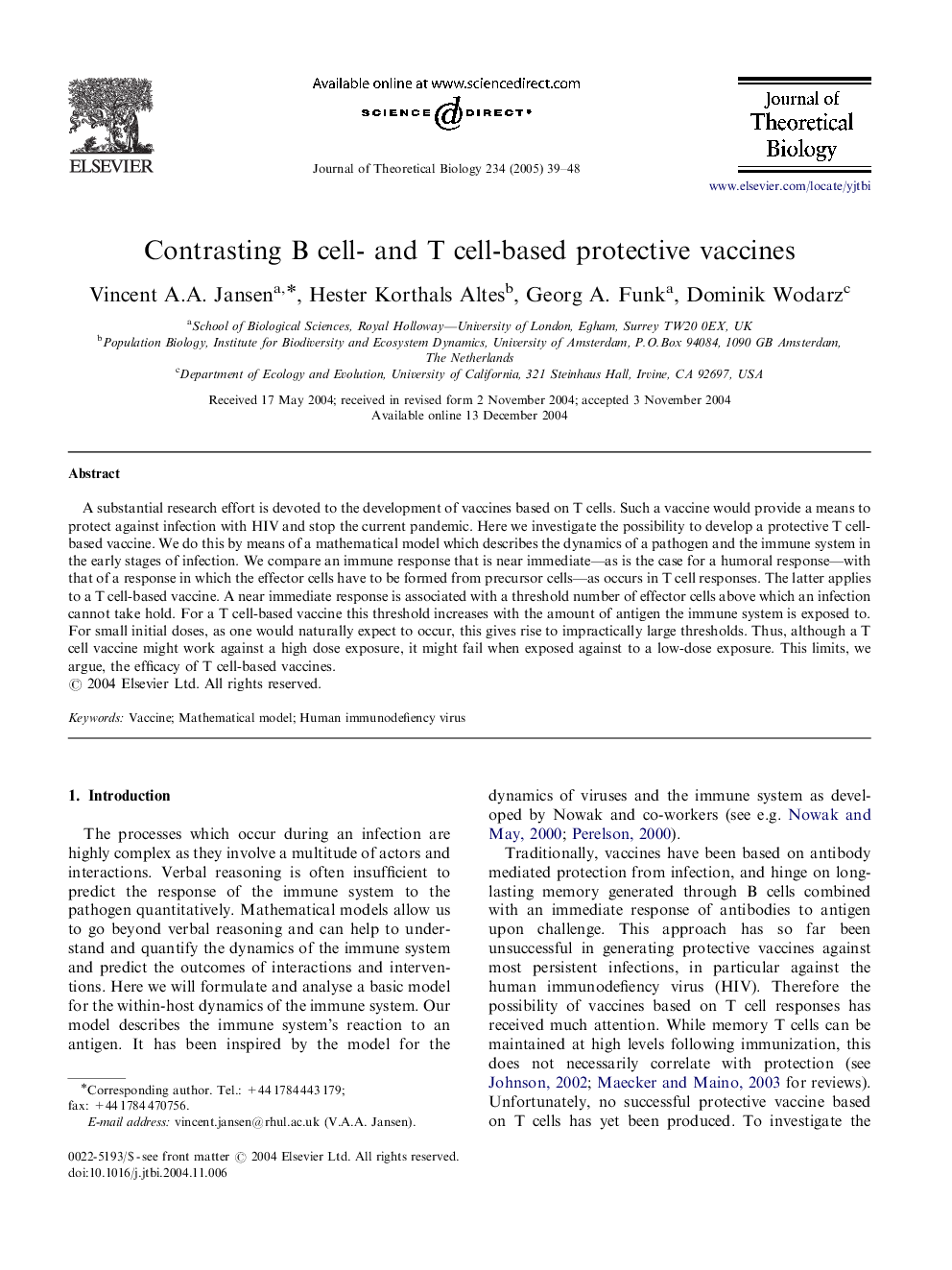| Article ID | Journal | Published Year | Pages | File Type |
|---|---|---|---|---|
| 9469720 | Journal of Theoretical Biology | 2005 | 10 Pages |
Abstract
A substantial research effort is devoted to the development of vaccines based on T cells. Such a vaccine would provide a means to protect against infection with HIV and stop the current pandemic. Here we investigate the possibility to develop a protective T cell-based vaccine. We do this by means of a mathematical model which describes the dynamics of a pathogen and the immune system in the early stages of infection. We compare an immune response that is near immediate-as is the case for a humoral response-with that of a response in which the effector cells have to be formed from precursor cells-as occurs in T cell responses. The latter applies to a T cell-based vaccine. A near immediate response is associated with a threshold number of effector cells above which an infection cannot take hold. For a T cell-based vaccine this threshold increases with the amount of antigen the immune system is exposed to. For small initial doses, as one would naturally expect to occur, this gives rise to impractically large thresholds. Thus, although a T cell vaccine might work against a high dose exposure, it might fail when exposed against to a low-dose exposure. This limits, we argue, the efficacy of T cell-based vaccines.
Related Topics
Life Sciences
Agricultural and Biological Sciences
Agricultural and Biological Sciences (General)
Authors
Vincent A.A. Jansen, Hester Korthals Altes, Georg A. Funk, Dominik Wodarz,
